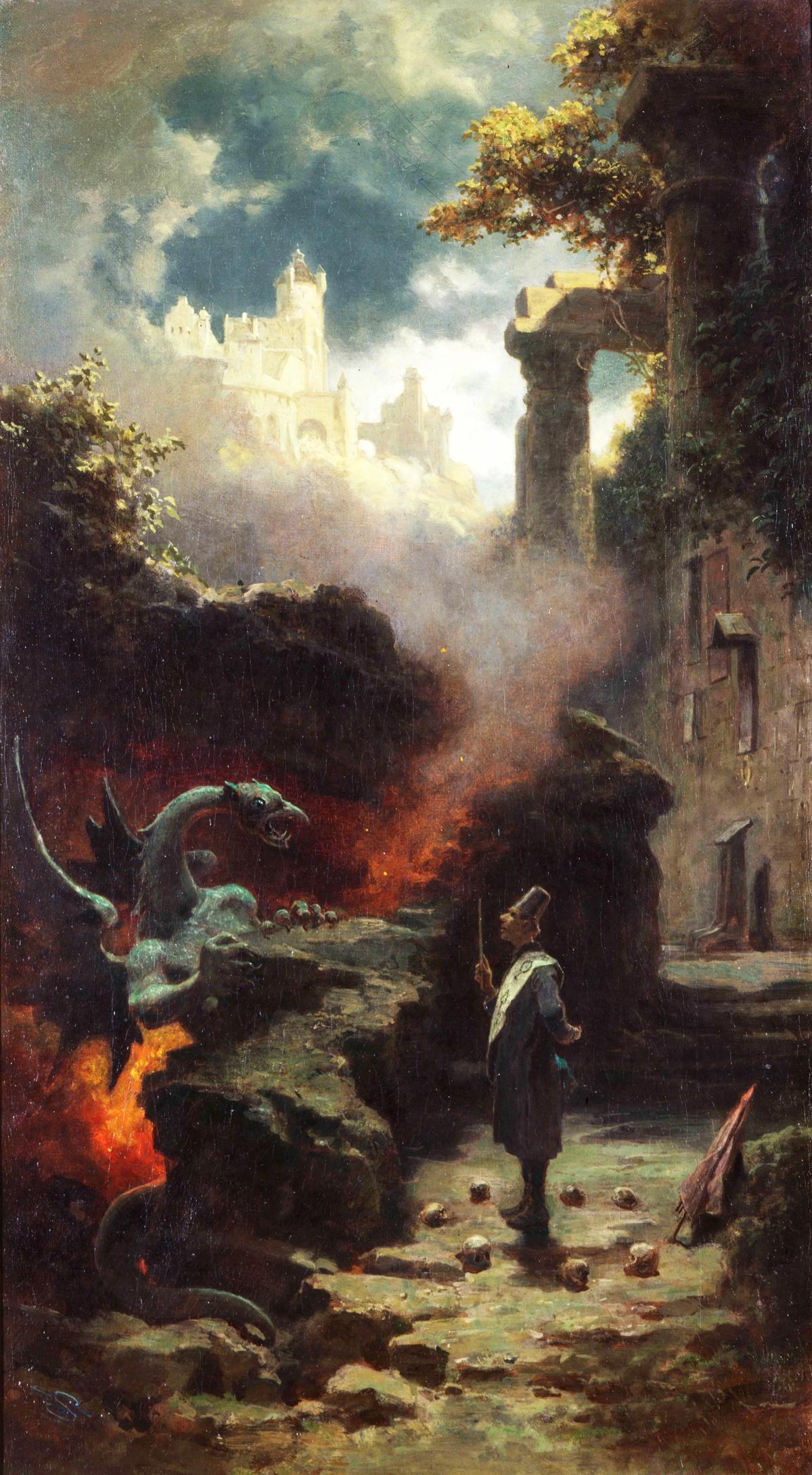Dr. Oetker, a family-owned German manufacturer of food products, says it has returned a painting by Carl Spitzweg to the heirs of a Jewish tobacco dealer who was murdered by the Nazis at Buchenwald concentration camp.
The painting, known as Der Hexenmeister (Sorcerer and Dragon), is one of two almost identical works produced by Spitzweg between 1875 and 1880. It formed part of a small collection assembled by Leo Bendel, who lived with his non-Jewish wife in Berlin.
Bendel was persecuted on race grounds and forced to leave his job in 1935. Planning to flee Nazi Germany, he sold some paintings to Galerie Heinemann in Munich in 1937. These included the Spitzweg painting, which was purchased there by Caroline Oetker that year.
The Bendels fled to Vienna, where Leo was arrested and deported to Buchenwald in 1939. He died the following year. His wife Else survived the Second World War, but her attempts to secure compensation from the German government for their lost property were unsuccessful.
Dr. Oetker, which makes food products such as cake mixes, muesli and pizza, published a study in 2013 showing that the company had profited from its SS and Wehrmacht connections and had “Aryanised” Jewish property. In 2015, the company began researching the provenance of its art collection, which comprises silver and gold antiques, porcelain and several hundred paintings.
Though the company has been aware of the painting’s tainted history and has been willing to return it for some years, it took a long time to identify Bendel’s heirs, says Jörg Schillinger, a spokesman for Dr. Oetker.
“This settlement with a private collection on the basis of a solution that is both amicable and equitable is exemplary,” Gunnar Schnabel, the lawyer representing Bendel’s heirs, said in a statement. “Unfortunately such solutions are still the exception to the rule.”
The Spitzweg painting is the seventh item Dr. Oetker has restituted. Others include a portrait by Anthony van Dyck, which was returned to the heir of Jacques Goudstikker, a Jewish art dealer.


